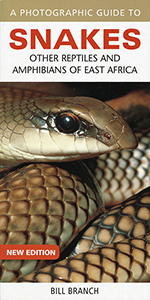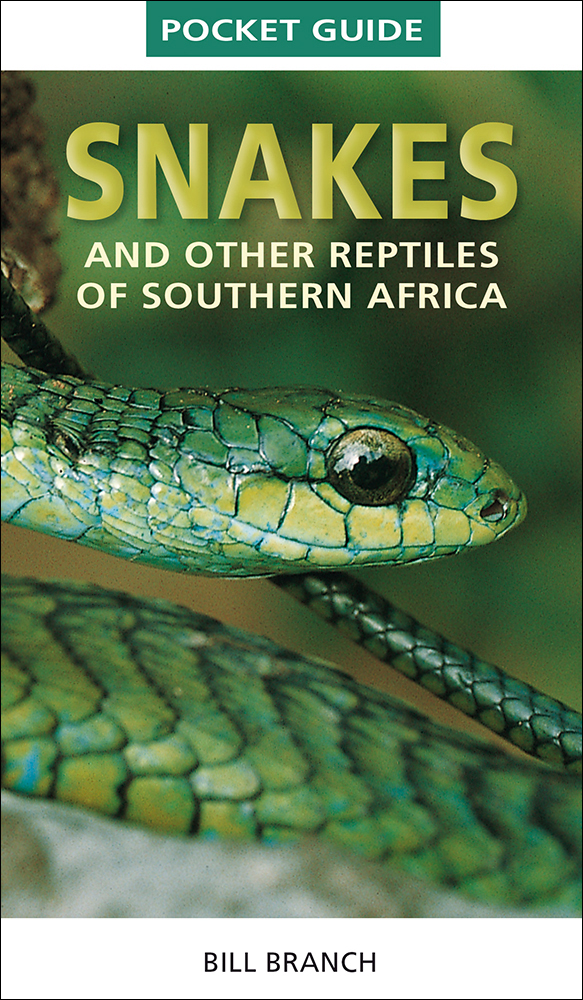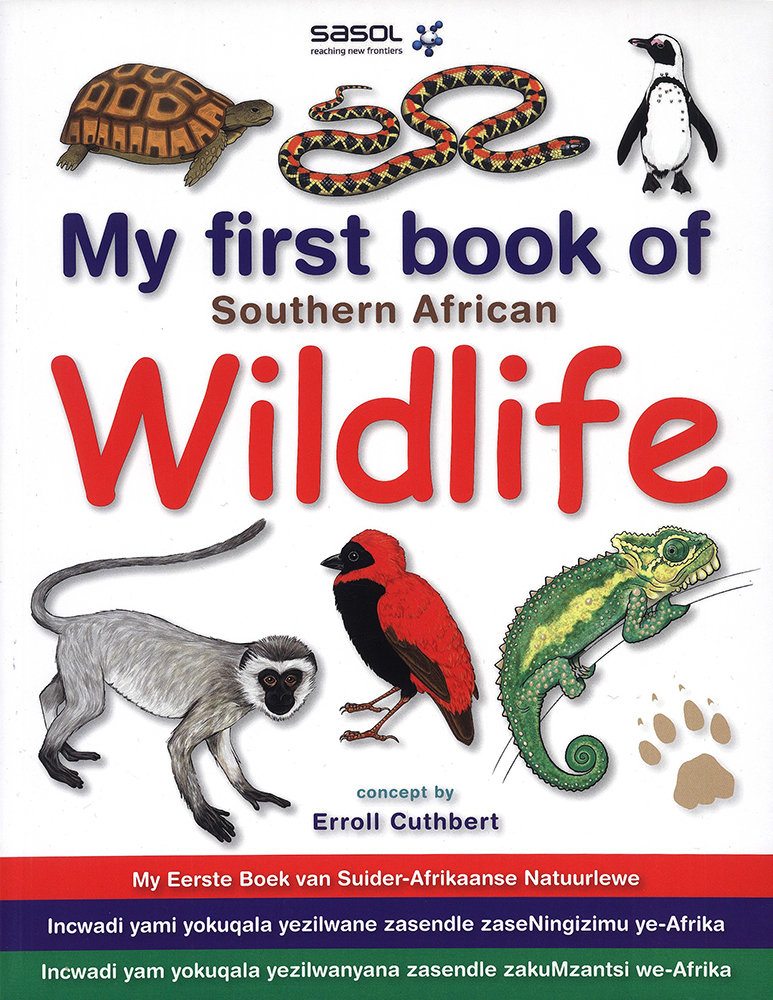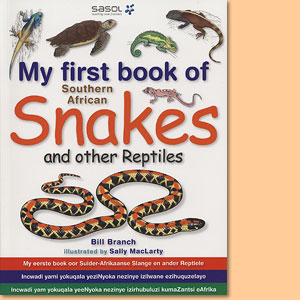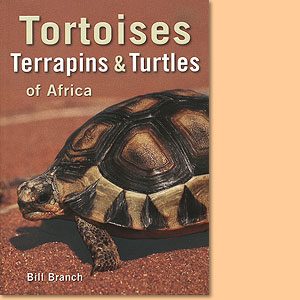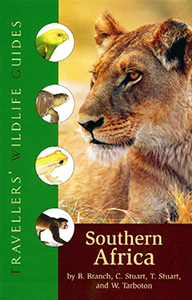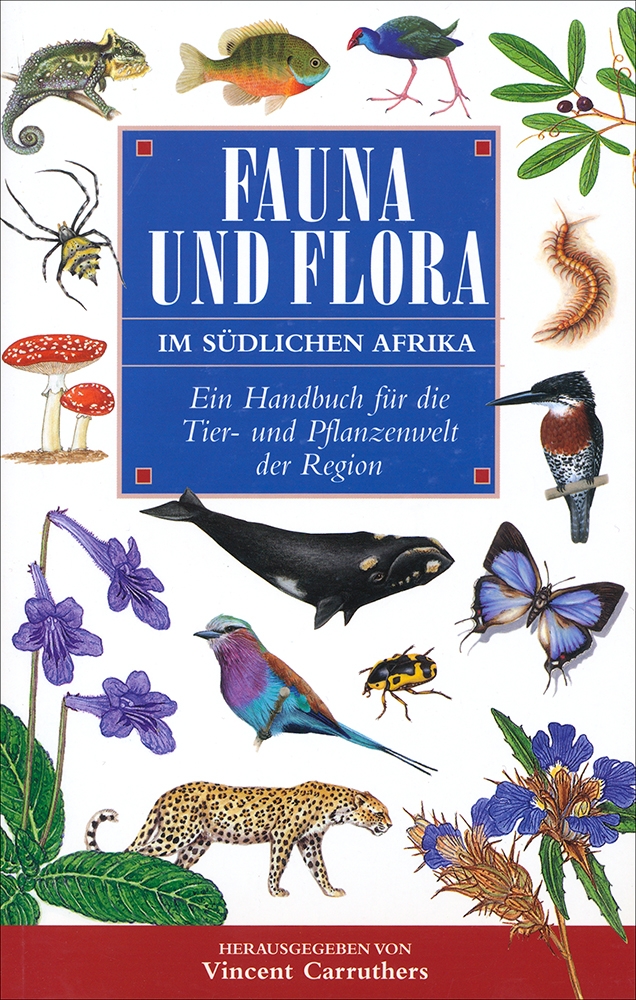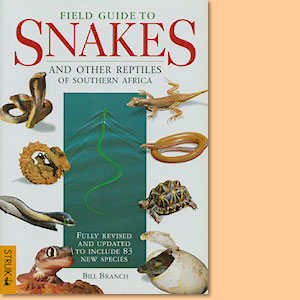A photographic guide to snakes, other reptiles and amphibians of East Africa, by Bill Branch
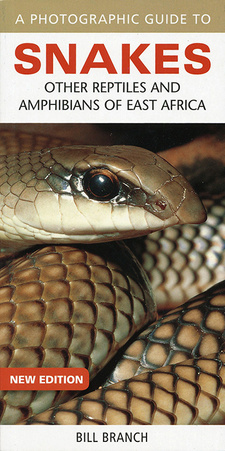
A photographic guide to snakes, other reptiles and amphibians of East Africa. Biil Branch, Random House Struik. 2nd edition. Cape Town, South Africa 2014 ISBN 9781775841654 / ISBN 978-1-77584-165-4
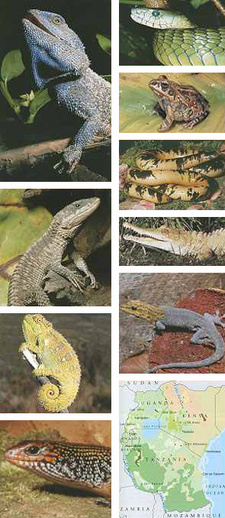
A photographic guide to snakes, other reptiles and amphibians of East Africa, by Bill Branch.
Introduction by Bill Branch: The photographic guide to snakes, other reptiles and amphibians of East Africa is designed to introduce the hidden animals that live often unnoticed all around us. East Africa includes here the countries of Kenya, Uganda, Rwanda, Burundi and Tanzania, and has a combined area of approximately 1.819.000 square kilometres.
It is host to a tremendous variety of habitats that harbour a magnificently diverse reptile and amphibian fauna. Over 420 reptile species have been recorded from East Africa, as well as more than 200 amphibians. Many of these are endemic, particularly to the isolated mountain regions, such as the Eastern Arc Mountains of Tanzania, which are a global hotspot of biodiversity. Unfortunately, not all species can be included in this small guide, and those chosen emphasize the more colourful and conspicuous species, as well as those unique to, or endangered in, East Africa. It is hoped that this small book will help to enrich wildlife experience and will convince readers that this wonderful thing called life must be preserved in all its fabulous diversity. Living reptiles are extremely diverse and the relationships between the main orders and families are still controversial. Three of the four surviving lineages occur in East Africa, including the crocodilians (Order Crocodylia); tortoises, terrapins and turtles (collectively called chelonians, Order Chelonia); and the scaled reptiles include snakes, lizards and worm lizards (collectively called squamates, Order Squamata).Crocodiles are more closely related to dinosaurs and birds than to other reptiles, and chelonians have little similarity to other living reptiles. Among scaled reptiles, lizards are the ancestral group from which snakes and worm lizards (also called amphisbaenians) evolved. Limb loss in lizards has evolved many times, and it is not always easy to distinguish legless lizards from snakes. Most snakes have enlarged belly scales (ventrals) that aid locomotion, whereas leg-less lizards do not. In addition, the eyes of snakes lack eyelids and they have an unblinking stare. However, snakes that burrow often lose eyes and enlarged belly scales. Burrowing lizards may also become blind, and look very similar to burrowing snakes. There is no simple rule for telling them apart, but all blind snakes have very short tails with a sharp spine at the tip, and their heads are rounder and blunter than those of legless lizards. Reptiles have only limited mobility and many have very specific habitat requirements. In general, lizards can be considered habitat-linked, while snakes can be considered food-linked. This is reflected in many of their common names. Thus, among snakes, we talk of egg eaters, centipede eaters and slug eaters, and among lizards, of desert lizards, rock lizards and water monitors. In practical terms, this means that lizards often have very small ranges within which they inhabit specific places. Snakes often range over large areas and occur in different habitats, but search for specific prey. The majority of reptiles, including all crocodiles and chelonians, are oviparous (egg-laying). Most lay clutches of between five and 20 eggs, although large sea turtles may lay up to 1000 eggs in a season. By contrast, most geckos lay only two eggs at a time. With few exceptions, parental care in all local reptiles ends when the eggs are laid and the nest sites are covered. The exceptions are pythons and crocodiles which both attend their eggs until they hatch. A few snakes also stay with their eggs after laying them, although this is poorly known. In crocodiles and many chelonians, the sex of the embryo is dependent upon the temperature at which the egg is incubated. In crocodiles, males develop in eggs at high temperatures, while the same temperatures in chelonians usually produce females. Many snakes and lizards are viviparous, retaining their eggs within the body and giving birth to live young. This is usually associated with life in cool climates. [...]
This is an extract from the book: A photographic guide to snakes, other reptiles and amphibians of East Africa, by Bill Branch.
Book title: A photographic guide to snakes, other reptiles and amphibians of East Africa
Author: Bill Branch
Genre: Nature Guide
Publisher: Random House Struik
2nd edition. Cape Town, South Africa 2014
ISBN 9781775841654 / ISBN 978-1-77584-165-4
Softcover, 10 x 19 cm, 160 pages, throughout colour photos
Branch, Bill im Namibiana-Buchangebot
A photographic guide to snakes, other reptiles and amphibians of East Africa
This is a handy and well made photographic guide to most of the common snakes, reptiles and amphibians of East Africa.
Snakes and other Reptiles of Southern Africa (Pocket Guide)
This pocket guide features 276 species of snakes and other reptiles of Southern Africa.
My first book of Southern African wildlife
My first book of Southern African wildlife introduces children to 58 mammals, 58 birds and 56 reptiles.
My first book of Southern African snakes and other reptiles
My first book of Southern African snakes and other reptiles introduces 56 different species in English, Afrikaans, Zulu and Xhosa and is made for young readers.
Tortoises, terrapins and turtles of Africa
Good colour photographs for easy identification of 46 chelonian species of Africa, tortoises, terrapins and turtles.
Traveller's Wildlife Guide Southern Africa
Traveller's Wildlife Guide Southern Africa introduces 500 of Southern Africa’s most common amphibians, reptiles, birds, and mammals.
Fauna und Flora im südlichen Afrika
Fauna und Flora im südlichen Afrika: Ein sehr beliebtes Handbuch für die Tier- und Pflanzenwelt der Region.
Field guide to snakes and other reptiles of Southern Afrika
Fully revised and updated, this field guide to snakes and other reptiles of Southern Afrika includes 83 new species.
A photographic guide to snakes and other reptiles of Southern Africa
Althoug a handy and basic guide, this photographic guide to snakes and other reptiles of Southern Africa shows excellent photographs.

